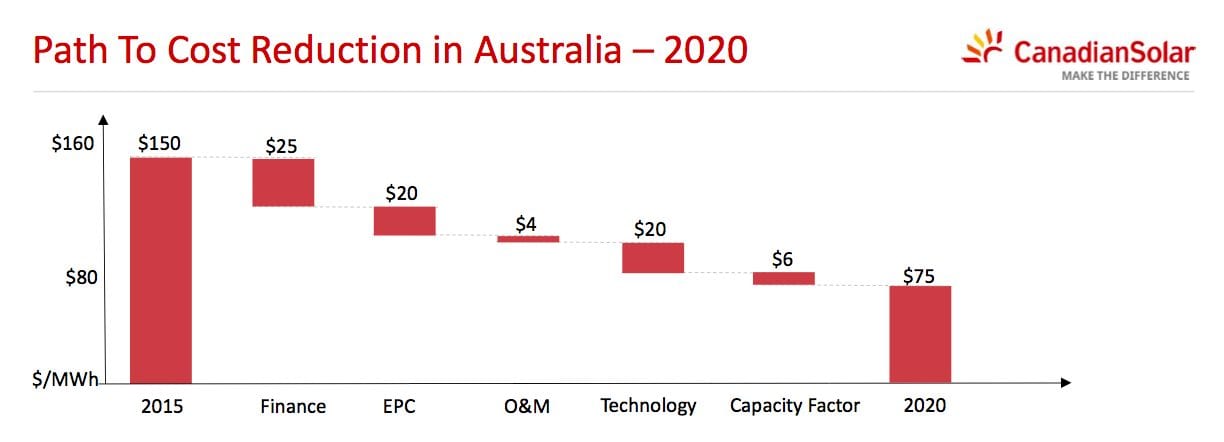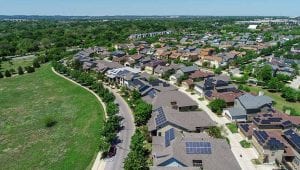Last week, the Australian Renewable Energy Agency announced a road-map to reduce the price of large scale solar in electricity, to ensure that it can compete with wind energy within a few years. It predicted a cost of $80-$100/MWh by 2020, underpinned by new funding to support a series of big projects.
Canadian Solar, one of the big four solar module manufacturers in the world, and with the biggest pipeline of large scale solar projects in Australia, believes the cost of solar will fall even faster – by 50 per cent from current levels within five years, and down to a price of $75/MWh by 2020.
Daniel Ruoss, the head of Australian operations at Canadian Solar, said the big three ticket items in reducing costs in Australia are on technology, finance and installation (also known as EPC – the contractors that build the plants).
Ruoss said the reduction in the cost of finance would be accelerated by support from the Clean Energy Finance Corporation. And he said there were signs that Australian banks were “catching up” with the international peers.
The EPC costs in Australia are one of the highest in the world – “too much fat and not enough competition”, Ruoss said – and would only likely fall once their was a big pipeline of projects under construction, and they attracted Asian EPC companies as well as the European ones.
Technology costs, he said, were in the control of the module manufacturers such as Canadian Solar. Capacity factors would also increase as panel efficiency improved. Module costs had fallen 25 per cent in the last three years in Australia and Australia had some of the lowest PV panel pricing globally.
Ruoss says 100MW are at “late stage”, including the 95MW Oakey project in south-west Queensland and a 5MW fringe of grid solar project that could be announced soon. Another 400MW of projects in Queensland were at the “early stage”, while there was another 400MW in Western Australia,
Ruoss also said the corporate market – where large corporations build large scale solar installations and sign a direct off-take agreement – was also poised to grow.
Canadian has already installed 4MW of rooftop solar on the rooftops of IKEA stores, and the Public Transport Victoria is looking to commission two 20MW solar farms in Victoria to provide solar power for its trams network.
Ruoss said the corporate market in Australia could be 100MW. He said that at least 1.5GW of large scale solar could by built by 2020 to meet the 33,000GWh renewable energy target. That prediction lies in between the 750MW predicted by the federal government and the 2.5GW predicted by Bloomberg New Energy Finance.











